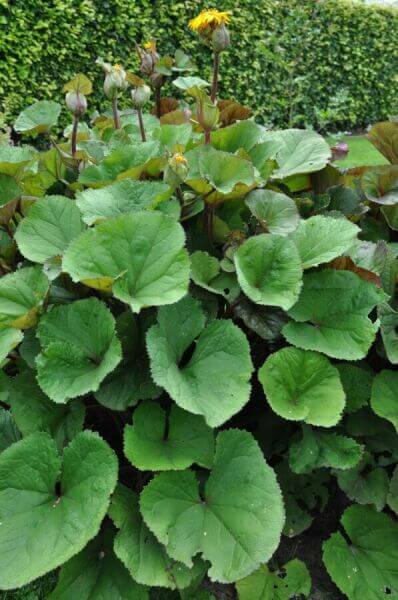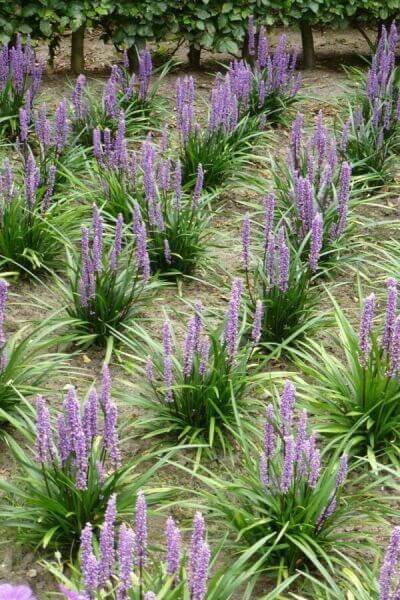Best Hedging Plants For Neat Hedges
Best Hedging Plants For Neat Hedges
Blog Article
Top Hedge Plants For Your Garden
Improve your garden's appeal with lavish hedge ranges such as Yew (Taxus), Thuja, Laurel, Photinia, and Bamboo, commemorated for their structural stability and environmental benefits.
Yew and Thuja supply evergreen protection and winter resilience, while Laurel provides quick development and broad, fragrant leaves.
Photinia includes seasonal beauty with its vibrant red foliage, and Bamboo lends a low-maintenance, tranquil atmosphere.
These hedges improve air quality, minimize sound, and produce tranquil, private areas.
Correct planting, spacing, and upkeep make sure energetic development and environmental harmony.
Check out how these lush varieties can elevate your garden's appeal and well-being.
Key Takeaways
Change Your Garden With Lush Hedge Ranges
- Select Yew for its dense, evergreen development and unrivaled longevity.
- Go with Laurel for its quick development and broad leaves, ensuring quick privacy.
- Select Photinia for its lively seasonal foliage, which turns a striking dark red.
- Make use of Bamboo for a low-maintenance, winter-hardy hedge with visual appeal.
- Space plants 2-3 per meter and prune routinely for ideal development and health.
Popular Hedge Plants
When transforming a garden with rich hedge ranges, it's important to think about popular hedge plants such as Yew, Thuja, Laurel, and Photinia due to their unique attributes and benefits.
Yew (Taxus) is highly esteemed for its longevity and thick, green growth, making it a prime choice for enduring landscapes.
Thuja is noted for its evergreen foliage and robust winter season durability.
Photinia includes seasonal vibrancy with red leaves that darken gradually, developing dynamic visual appeal.
Laurel provides quick development and fragrant, broad leaves, suitable for quick privacy.
Additionally, Bamboo is an exceptional choice for ambiance, offering a low-maintenance, winter-hardy choice that improves the garden's visual with its stylish, swaying walking sticks.
These choices accommodate a range of horticultural needs and preferences.
Advantages of Garden Hedges
Garden hedges use a plethora of advantages, making them a valuable addition to any landscape. These natural barriers are cost-effective to carry out and supply considerable wind security, enhancing air blood circulation and contributing to sound reduction. The dense foliage of hedges like Thuja and Beech makes sure personal privacy by blocking visibility, developing a peaceful and secluded environment.
Hedges also play a crucial function in microclimate policy, supplying a stable environment that fosters plant development and reduces temperature level changes. Their detailed leaf structures filter contaminants, enhancing air quality and contributing to a much healthier garden ecosystem.
Additionally, hedges master sound reduction, soaking up and deflecting sound waves to lower ambient sound levels. This dual functionality of supplying both acoustic and visual privacy improves the total tranquility and visual appeal of any garden.
Planting and Upkeep Tips
For a successful hedge, precise preparation of the planting area is vital. Make sure the soil has appropriate pH and drain to support strong root advancement.
Area the plants appropriately for the selected species. Water the hedge regularly during its initial development phase, adjusting as required with seasonal changes.
Execute a systematic insect control and disease prevention technique, utilizing natural or chemical treatments when required. Frequently check for aphids, termites, and fungal infections.
Apply mulch to retain wetness and suppress weeds. Seasonal pruning promotes thick development and air circulation, necessary for plant health.
Following these guidelines will help you cultivate a lively, well-maintained hedge that boosts the beauty of your garden.
Spacing and Cutting Guidelines
Spacing and Cutting Standards
Appropriate spacing and trimming are important for cultivating healthy, aesthetically appealing hedges. Adequate spacing makes sure each plant gets sufficient nutrients, light, and air flow.
Follow these standards for optimum hedge maintenance:
- Spacing: Position hedge plants 2-3 plants per meter to encourage robust development.
- Pruning Methods: Regular pruning is necessary for maintaining wanted hedge height and shape. Cut new growth in summer and cut back older wood throughout winter season.
- Seasonal Care: Adjust trimming approaches and schedules according to seasonal requirements to guarantee plant health.
- Hedge Height: Frequently display and trim to preserve the preferred hedge height and achieve uniform visual appeals.
Abiding by these actions will guarantee your hedge grows, improving both the appeal and functionality of your garden.
Choosing the Right Hedge
Selecting the Right Hedge
Selecting the appropriate hedge Browse around this site includes examining elements such as mature height, foliage density, and environmental strength. Effective hedge plant selection needs comprehending each types' growth attributes and site-specific versatility.
For example, Yew (Taxus) uses outstanding longevity and thick growth, while Thuja is significant for its winter strength. Furthermore, considering upkeep requirements is vital; fast-growing types like Laurel or Privet need regular cutting, whereas low-maintenance options like Bamboo or Ivy may be more suitable for those seeking very little upkeep.
Environmental elements such as soil type, light accessibility, and moisture conditions ought to likewise direct the choice process. This mindful approach guarantees the chosen hedges will flourish, providing both practical and aesthetic advantages to the garden landscape.
Shipment and Planting Recommendations
To ensure your hedge plants flourish, they need to be delivered by specialized couriers and planted without delay upon arrival.
Follow these important actions for effective planting:
- Soil Preparation: Enrich the soil with organic matter to enhance drain and nutrient content.
- Planting Depth: Produce a trench two times the width and equivalent to the depth of the root ball.
- Watering Strategies: Water thoroughly after planting, keeping the soil regularly damp however not filled.
- Mulching: Apply a layer of mulch to retain moisture and suppress weeds.
Client Assistance and Service
Offered the crucial role of timely help in horticultural pursuits, our consumer support group is readily available 6 days a week through telephone, email, and social networks to offer professional advice and promptly deal with any issues. Their devotion to fast action times makes sure consumer satisfaction by dealing with inquiries associated with plant health, ideal planting techniques, and upkeep schedules.

----------------------
Telephone
Within 24 hr
This comprehensive support system, enhanced by an excellent 9.3/ 10 consumer ranking, highlights our dedication to improving the gardening experience for each client.
Often Asked Concerns
How Long Does It Take for Hedge Plants to Establish?
Hedge plants typically need one to 3 years to end up being totally developed, with the specific period differing by types and growing conditions.
Efficient care throughout this important duration is necessary for robust development. Constant watering, watchful weed control, and suitable fertilizer application are critical in promoting strong root development.
For example, fast-growing species like Laurel might develop faster, while slower-growing ranges such as Yew might take longer. Diligent maintenance speeds up the facility process, resulting in dense and healthy hedges.
What Are the Best Hedge Plants for Personal Privacy?
The concern of the finest hedge plants for privacy involves evaluating evergreen and deciduous options.
Evergreen hedges like Thuja, Laurel, and Cypress provide year-round protection, making sure continuous privacy.
In contrast, deciduous hedges such as Beech use seasonal privacy, shedding leaves in colder months.
Secret upkeep suggestions for privacy hedges consist of regular trimming, fertilizing in spring, and correct spacing-- usually 2 to 3 plants per meter.
Additionally, constant watering and persistent weed removal are vital for promoting healthy, thick growth.
Can Hedge Plants Bring In Wildlife to My Garden?
Yes, hedge plants can draw in wildlife to your garden by providing necessary benefits like shelter, food, and nesting websites, consequently enhancing regional biodiversity. For example, yew, holly, and laurel are exceptional for drawing in birds, while ivy supports a range of bugs.
Nevertheless, it is necessary to keep in mind that there are some disadvantages, such as increased upkeep to manage bugs and regular maintenance. Thoroughly selecting and keeping hedge varieties can assist balance these drawbacks and benefits, eventually fostering a dynamic and sustainable community in your garden.
Exist Any Flowering Hedge Plants Available?
Yes, there are flowering hedge plants readily available that can enhance the charm of your garden.
For instance, Elaeagnus, also referred to as Olive Willow, produces aromatic white flowers in the fall, including a touch of elegance.
Photinia, another popular choice, showcases dynamic red leaves that grow into a rich green, creating a dynamic visual result throughout the seasons.
To make sure these plants thrive, it's necessary to practice appropriate pruning methods and seasonal upkeep, such as cutting brand-new growth in the summer and cutting back in the winter season.
These procedures will assist maintain the health and aesthetic appeal of your flowering hedges.
How Do I Prevent Pests in My Hedge Plants?
To prevent insects in hedge plants, utilize natural insect control techniques and keep correct hedge care. Present beneficial bugs like ladybugs, which victimize damaging bugs, to develop a well balanced ecosystem.
Frequently check your hedges for indications of problem and promptly remove any affected parts to prevent the spread. Ensure the health of your hedges by applying well balanced fertilizers and supplying appropriate water.
Make use of mulching to maintain soil wetness and correct spacing to lower plant tension and promote robust development. These practices collectively help in reducing pest concerns and keeping a healthy hedge.
Conclusion
In essence, selecting the best hedge varieties such as Yew, Thuja, and Laurel can change any garden into a serene haven. These plants provide year-round plant, boost aesthetic appeal, and offer useful advantages like noise decrease and wind defense.
Appropriate planting techniques, precise spacing, consistent watering, and seasonal trimming are essential for ideal growth.
Trusted shipment services and skilled client support guarantee a smooth experience from purchase to planting, making it easier than ever to raise your outdoor area.
Garden hedges offer a wide range of advantages, making them an important addition to any landscape. These natural barriers are cost-efficient to implement and offer considerable wind protection, improving air flow and contributing to sound decrease. The dense foliage of hedges like Thuja and Beech makes sure privacy by blocking visibility, developing a peaceful and remote environment.

Pruning Strategies: Routine pruning is necessary for keeping preferred hedge height and shape. Trim brand-new development in summertime and cut back older wood during winter season.
Report this page